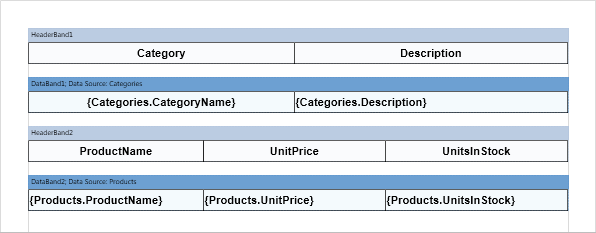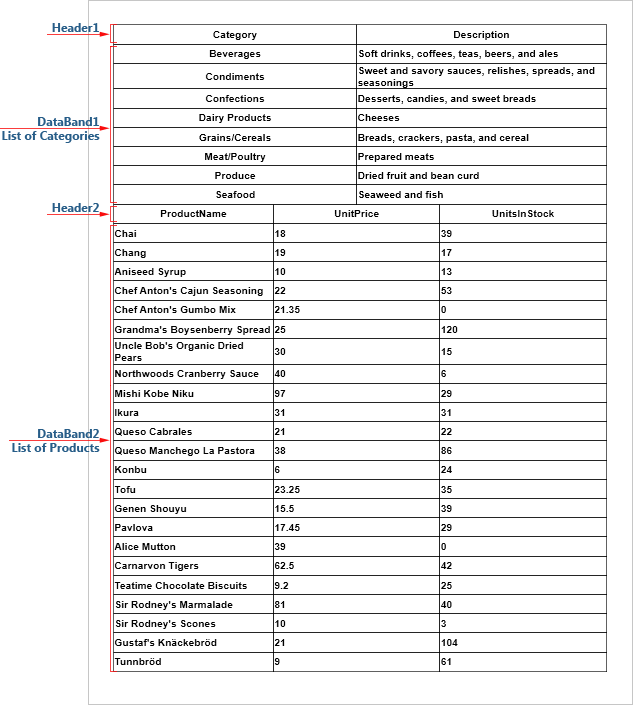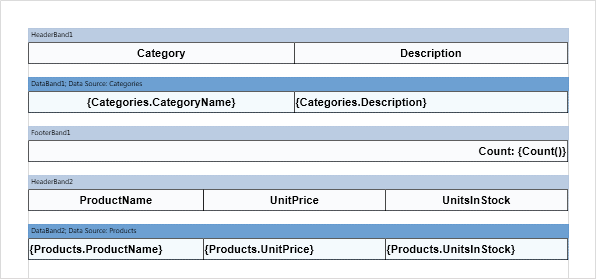The basis is the "data band". Each data band has a data source specified. A data source is a table. Each data source has data fields. You can output a table by placing a text component with references to these fields. A single data source can specify a previously unknown number of rows of data. When there is a row in the data source specified data, the band will be output as many times. For example, if you have 100 rows in your data source, bad data will multiply the output by 100. If there is not enough space on page 1, page 2 is generated and printing continues.

virtual data band
You may need to print the data band multiple times without specifying the data source. In such cases, use the CountData property.

The data band editor allows you to specify the number of elements. The figure below shows the data editor.

![]() This field specifies the number of elements in the data band.
This field specifies the number of elements in the data band.
![]() No data source specified.
No data source specified.
By default the CountData property is 0, but setting it to 4 will print the Data band 4 times. This can be used to print empty columns. It is important to remember that in this case no data source is specified.




